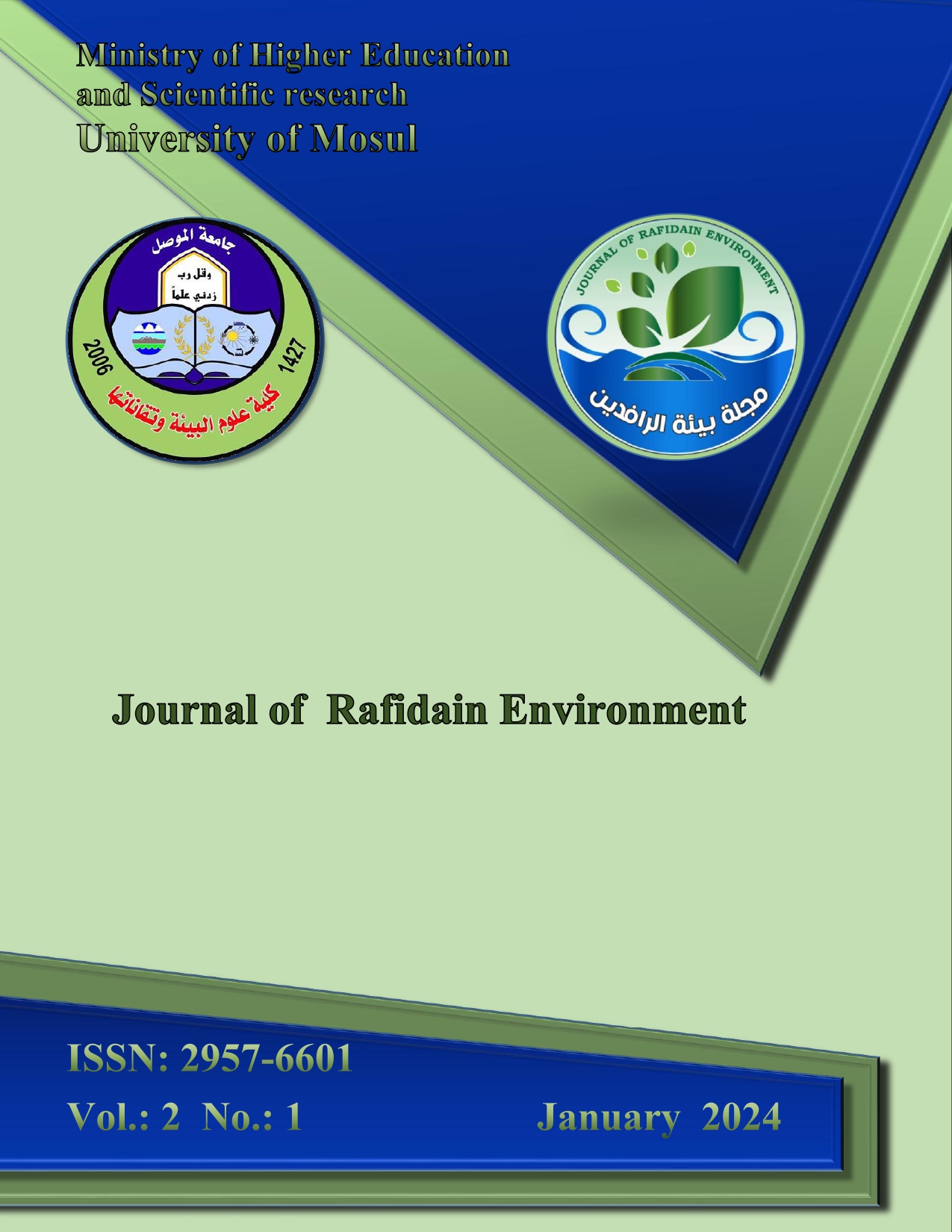مرض العفن الاخضر الناجم عن اصابة فطر Penicillium halotolerans لثمار الحمضيات المزروعة محلياً في العراق
القسم: Research Article

منشور
Oct 6, 2025الملخص
للتعرف على العامل المسبب للمرض تم جمع 8 ثمار تظهر عليها اعراض العفن الاخضر. وكانت الأعراض كالآتي: نمو فطري أخضر مزرق على سطح الثمرة ومن ثم اضمحلال الثمار نهائياً. تمت تنمية الفطريات على الاوساط الزرعية Cazepek yeast extract agar, Malt extract media, and Glycerol nitrate agar وحضنت في درجات حرارة مختلفة (4، 25، 37 درجة مئوية). التشخيص الجزيئي للفطر تم اتباع طريقة استخلاص ال DNA وفقا لشركة المصنعة (Zymo Research environmental purification, Quick-DNA™ Miniprep Plus Kit).تم تسجيل العزلة للفطر P.halotolerans في بنك الجينات ذو الرقم (OR622875) بأسم (MBJ1) كأول عزلة فطرية تصيب الليمون المحلي في العراق.
المراجع
- Allawi, Y. J. A. o. R. I. (2022) Isolation and Identification of Penicillium rubens from the Local Strain in Mosul, Iraq, and Investigation of Potassium Phosphate Effect on its Growth. 77, 421.
- Bellemain, E., Carlsen, T., Brochmann, C., Coissac, E., Taberlet, P. & Kauserud, H. J. B. m. (2010) ITS as an environmental DNA barcode for fungi: an in silico approach reveals potential PCR biases. 10, 1-9.
- Houbraken, J., Frisvad, J. C., Seifert, K., Overy, D. P., Tuthill, D., Valdez, J., et al. (2012) New penicillin-producing Penicillium species and an overview of section Chrysogena. 29, 78-100.
- Lee, Y. J., Jeong, J.-J., Jin, H., Kim, W., Jeun, Y. C., Yu, G.-D., et al. (2019) In vitro and in vivo inhibitory effects of gaseous chlorine dioxide against Fusarium oxysporum f. sp. batatas isolated from stored sweetpotato: study II. The plant pathology journal, 35, 437.
- Lopes, J. M., Marques, N. C., dos Santos, M. D. d. M. C., Souza, C. F., Baldissera, M. D., Carvalho, R. C., et al. (2020) Dietary limon Citrus× latifolia fruit peel essential oil improves antioxidant capacity of tambaqui (Colossoma macropomum) juveniles. Aquaculture Research, 51, 4852-4862.
- Meena, M., Zehra, A., Dubey, M. K., Aamir, M. & Upadhyay, R. S. (2018) Penicillium enzymes for the food industries. In New and future developments in microbial biotechnology and bioengineering, pp. 167-186. Elsevier.
- Papoutsis, K., Mathioudakis, M. M., Hasperué, J. H., Ziogas, V. J. T. i. F. S. & Technology. (2019) Non-chemical treatments for preventing the postharvest fungal rotting of citrus caused by Penicillium digitatum (green mold) and Penicillium italicum (blue mold). 86, 479-491.
- Park, M. S., Lee, J. W., Kim, S. H., Park, J.-H., You, Y.-H. & Lim, Y. W. J. M. (2020) Penicillium from rhizosphere soil in terrestrial and coastal environments in South Korea. 48, 431-442.
- Pitt, J. I. & Hocking, A. D. (2009) Fungi and food spoilage. Springer.
- Pitt, J. I., Hocking, A. D., Pitt, J. I., Hocking, A. D. J. F. & spoilage, f. (1997) Penicillium and related genera. 203-338.
- Purohit, S. & Mukherji, S. (1985) Growth regulating activity of penicillin in higher plants. In Hormonal Regulation of Plant Growth and Development, pp. 265-278. Springer.
- Xiao, R., Chen, Y., Chen, M., Liu, X., Wang, J. & Liu, B. (2022) First Report of Green Mold Disease Caused by Penicillium ochrochloron on Medicinal Plant Pseudostellaria heterophylla in China. Plant Disease.
تنزيل هذا الملف
الإحصائيات
##submission.copyrightAndLicensing##

هذا العمل مرخص بموجب Creative Commons Attribution-NonCommercial 4.0 International License.